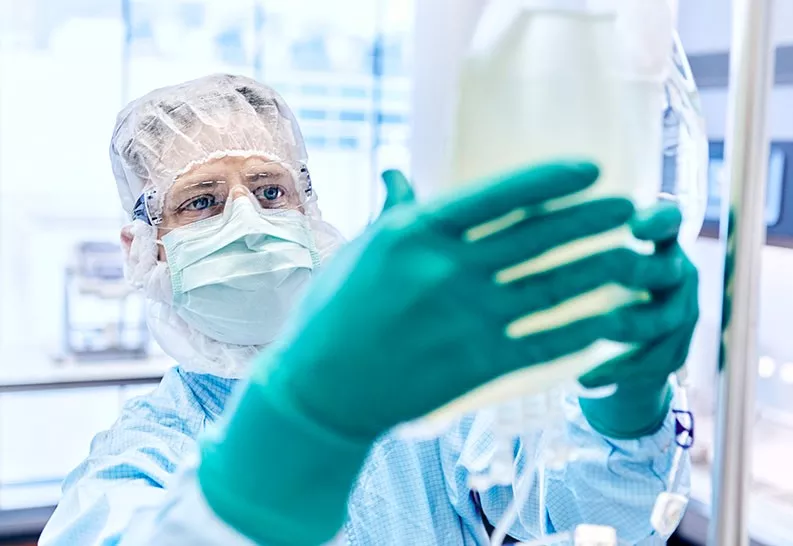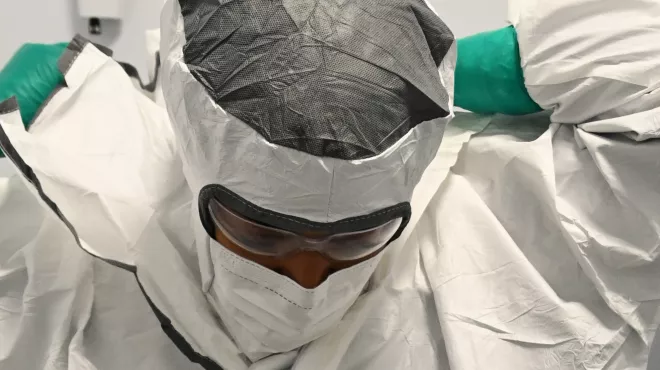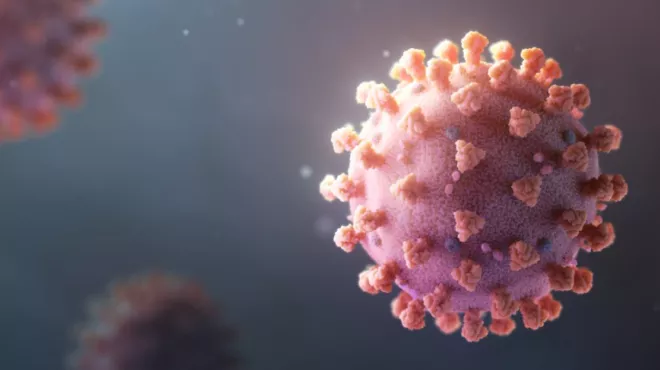It was another hard day for the Novartis Cell & Gene team in Stein, Switzerland, but not because of the bad weather, which had taken an unexpected turn for the worse in mid-March. For eight hours, they were training intensively, as they had been for the weeks and months before - hardwiring the myriad steps that their new job would soon require them to do faultlessly every day.
Exercising either in pairs, with one colleague verifying every move made by his or her peer, or under the supervision of a coach, all team members were fully focused on the tasks at hand, each of them acutely aware of the high stakes. In several months, all of them knew, their dry run would come to an end and the first blood sample from a patient would arrive from a hospital at this new Cell & Gene facility, which is located roughly 30 kilometers (18 miles) from Basel, Switzerland. They would be responsible for genetically modifying patients’ T-cells – a type of white blood cell – and readying these cells to hunt for cancer. No room for mistakes. No room for second thoughts.
Bjoern Giner knows all about the tension, which will inevitably rise when the first batch is about to arrive. He has worked for the past few years in Morris Plains, New Jersey, where Novartis built the first industrial Cell & Gene facility, and still vividly remembers being part of the team that executed a chimeric antigen receptor T-cell therapy, better known as CAR-T, for the first time.
“I had worked in drug discovery before, where you’re a long way from the patient. But with the move to the Cell & Gene unit in the United States, that changed completely,” Giner explains. “When we handled the first batch, I felt nervous and excited at the same time. Never before in my career as a medical scientist did I feel so close to a single patient. Every step we took had a direct impact on a patient’s life. It was a completely different kind of work.”
Never before in my career as a medical scientist did I feel so close to a single patient. Every step we took had a direct impact on a patient’s life.
Bjoern Giner, Cell & Gene Process Expert and Technical Trainer
Since his first batch, Giner has worked on hundreds of CAR-T therapies. Given his long experience in the field, he is now acting as a coach in Stein tasked with educating his new colleagues about the technical aspects of the complex production process. As a coach, he must explain each incremental stage of the long procedure, which – in its entirety – fills a 1 000-page manual.
Giner does not tire of repeating how the blood sample is thawed and washed after its arrival from the hospital, and how the T-cells are extracted with the help of magnetic beads and then genetically modified with a viral vector (a tool to deliver cancer-killing genes into cells). Time and again, he explains how the viral vector is transduced into the T-cells and how the vector is later washed out before the modified T-cells are put in a bioreactor to grow in sufficient numbers to help patients fight their cancers.
Giner knows that every movement of the hand counts. But – more importantly – he aims to imbue his colleagues, many of whom have never worked with this technology before, with a sense of confidence that they are up to the task.
“[He] is a great coach not only because he is a Cell & Gene Process Expert,” says Drazen Jovic, who is being trained as a Cell Processing Specialist. “What makes him a great teacher is the way he helps us come to the terms with the process [through] his calm and considerate personality, which gives us room to develop and become experts ourselves.”

Jovic, like his two other colleagues, Melanie Axmann and Sven Panakkaparambil, is a newcomer to the field of gene technology, having previously worked in Schweizerhalle, Switzerland, as a chemicals operator. “I heard it in the news last summer when it was announced that Novartis would build a new Cell & Gene facility in Stein. I didn’t know a lot about the technology and started to research the topic before deciding to take the chance,” he says.
Prior to training, Jovic passed an aptitude test designed to assess candidates’ dexterity in working with pipettes and other gene technology hardware, as well as their English language skills and ability to remain calm and focused when under pressure.
The workflow here is fundamentally different from traditional chemicals or solid tablets production. The work and production areas are compartmentalized according to safety and aseptic standards, with each zone requiring associates to wear specialized gear.
Workers wear different protective apparel in each zone, which can take several minutes to put on, requiring them to stay in the designated work area for hours on end, as short breaks are impractical. “It’s far from easy,” says Wolfgang Schick, a Technical Trainer at the unit. “Except in an emergency, getting out of the safety zones requires time, so they can’t change location easily as in other work situations.”
Despite the demanding and complex work conditions, team members say they are up to the challenge. “This is an exciting time,” says Panakkaparambil, who will work on the Cell & Gene site’s Quality Assurance team. “We are a sort of technological frontrunner and all of us are extremely motivated to do our work. To be part of the team, everyone knows, is a huge opportunity and makes many of us extremely proud to be on this pioneering project.”
Of course, all members of the Cell & Gene team are fully aware of the difficulties and risks that CAR-T therapy entails. But no one is giving in. “I’m not scared,” says Jovic. “I have a lot of respect for what awaits us and I feel that we are being trained in the best possible way and that, once the first blood batch arrives, we are up to the task and can help each patient fight cancer.”
Giner nods in approval. He knows that unexpected challenges may arise. But he also knows that, in any such situation, everyone will go the extra mile. “This is about helping patients’ lives. Nothing could be more motivating or fulfilling. I am sure that everyone feels the same.”



